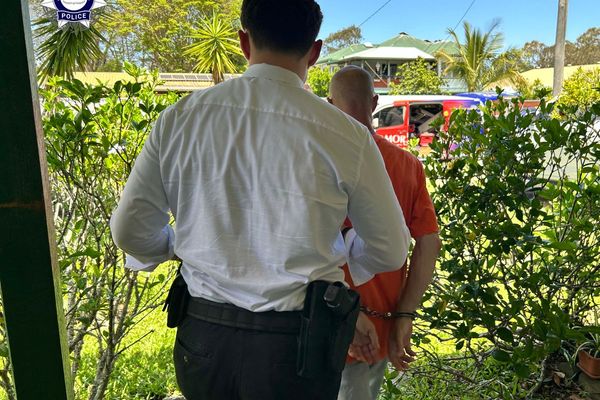
It was early March in 1971 and bitterly cold, but the snow and sleet didn’t dampen our spirits. Thousands of us had gathered for the first Women’s Liberation Movement march. We were singing and dancing as we walked through London and there was street theatre at Trafalgar Square, where the march ended. It was a joyous occasion. Our banners reflected our primary focuses: equal pay and equal opportunity, free contraception and abortion on demand. There were also lots of men of all ages taking part, kids too. And there was a huge police presence – we were surrounded by them, walking alongside, in front and behind. They were on the march too – whether they liked it or not!
I was taking pictures the whole time, running to get ahead, climbing up lampposts or on to bins. I remember passing Billingsgate fish market was a whole lot of fun, as workers came out to watch and cheer. I’ve got lots of pictures of passersby laughing with us – and some of them at us. But even if there was the occasional bit of mocking, things were never nasty. We weren’t being aggressive, so that wasn’t the reaction we got.
This shot must have been taken as we were approaching Oxford Circus. I like how it reflects the range of people who were on the march. The placard in the background was in support of US activist Angela Davis, who was a hugely important figure for the women’s movement in the early 1970s.
I’d been part of the UK movement since its earliest days and had joined one of the first women’s groups, in Tufnell Park, London. I was radicalised as a student and started going on anti-Vietnam war marches in 1967. I never left home without a camera round my neck. I started working for an agency called Report, run by a guy who had fought in the Spanish civil war. Report bought some of my pictures and they were published in the national press. They paid very badly though. I think it was £3 per photo published.
The year before the march, the UK women’s groups had held their first ever conference. People came from all over the country. There were academics reading papers, trade unionists talking about their struggles, discussions about families and children – all sorts of people from the left. We weren’t expecting more than 200 people but we had three times that. We didn’t want to be victims of press distortions, so I was the only photographer in the plenary sessions, allowed because I was part of the movement and nobody took any notice of me. But I knew it was important to have a record of this special occasion. My photographs of the conference, as well as the march, are among those on display at the Women in Revolt! exhibition, about to open in Edinburgh.
One thing I’d like to set the record straight on is the number of people who were on that march. The figure that’s usually given – and was repeated on captions when Women in Revolt! was at Tate Britain – is 4,000. Of course I can’t prove it but I’m sure there were tens of thousands of us. We were a solid block on the mile from Marble Arch to Oxford Circus, and once we got to Trafalgar Square it was completely chocka!
Later, in 1971, I gave up photography, partly driven by feelings of frustration at always being an observer. But there was another reason. I was living in a commune in Islington and we used to get regularly raided by the Special Branch in the middle of the night. They would always remove the film from my camera and take it away – which of course they weren’t allowed to do. I loved taking pictures of people but I thought: “No, I’m not having this. I’m not taking pictures for the Special Branch.” So I completely stopped photography and didn’t return to it for over a decade.
My love of photography began when I was very young – I was first given a camera aged 10. When I was 17, my family were living in Caracas, Venezuela, where my father was a diplomat. Caracas is in a valley and the surrounding hills are full of huts and shanty towns. I used to head out there every day to take photographs, and it became obvious that this was what I wanted to do. I went back to the UK in 1967 to study photography at the London College of Printing. With all the student protests in London and Paris and beyond during those years, it was a very exciting time, but I don’t think I had the sense that I was part of an extraordinary moment in history – one never does, does one?
The women’s movement made a lot of advances, although it’s still got a long way to go. But I feel proud now to have been part of it all.
Chandan (Sally) Fraser’s CV
Born: 1950, Woking
Trained: London College of Printing
Influences: Henri Cartier Bresson, Robert Capa, Eve Arnold, Alfred Stieglitz, Ansel Adams
High point: “Being sent to photograph Tennessee Williams at the ICA, London, in 1970”
Low point: “Giving up photography”
Top tip: “Have your camera with you all the time”
• Women in Revolt! Art and Activism in the UK 1970–1990 is at the Scottish National Gallery of Modern Art, Edinburgh, 25 May to 26 January. Then at Whitworth Art Gallery, Manchester, 7 March 2025 to 1 June 2025.







